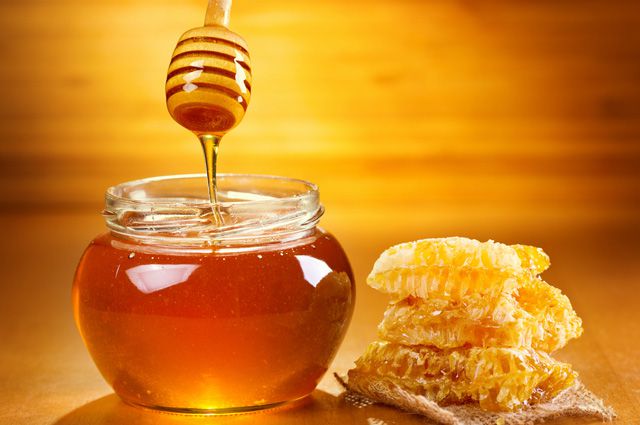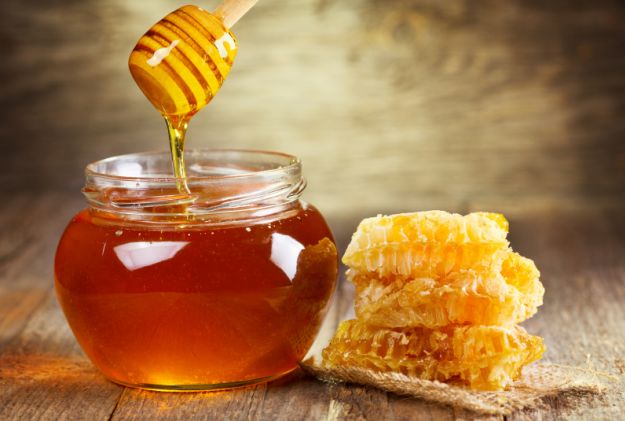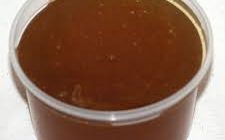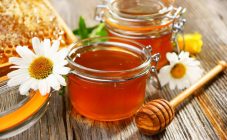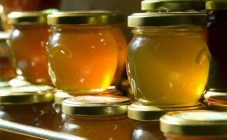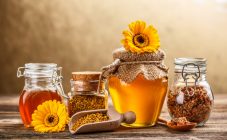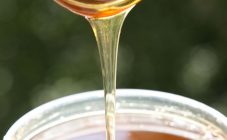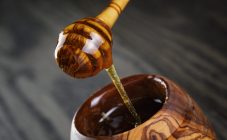Content:
Honey, which is loved by adults and children, can be classified as useful delicacies and an excellent cosmetic product. Most likely, not many people know, perhaps they are not interested in how bees, little striped workers, turn flower nectar into a healing sweetness.
Honey making process
The nectar that the collecting bees bring to the hive is attached to the top of the honeycomb cells. Thus, the process of evaporation of excess moisture starts. At the same time, the bees in the hive maintain the temperature and humidity necessary for the evaporation of moisture from the nectar. Bees create ventilation with their wings. The process by which nectar becomes honey is quite complex. Bees will transfer nectar from cell to cell more than once, filling only ¼ of it. They do this to evaporate moisture and ripen honey. Under the influence of enzymes in their saliva, a number of chemical transformations occur, the result of which is the breakdown of complex sugars into simple ones.
The bees prepare the finished product of their production for conservation, taking them to the comb farthest from the tray. The cells filled to the top are sealed with wax caps. Preserved by the hostesses of the hive, the product of their labor can be stored for years and not lose its properties.
Beekeepers believe that honeycomb-sealed honey should stand for a couple of weeks before being removed for pumping. It "reaches" in the honeycomb, its structure is formed, the fermentation process ends, impregnation with a pleasant waxy smell occurs.
Unripe honey
Honey comes to the counters of markets and shops from the apiary. If we take the closed combs, we can say with confidence that they contain mature honey, preserved by bees. In it, the percentage of moisture will be minimal. Striped workers will never clog the honeycomb with non-evaporated moisture. In the markets, beekeeping products are sold in jars on tap, and it is difficult to check what the sellers are offering.
Unripe honey contains more than 20% water, as mentioned above, but it can also be pumped out by beekeepers. For example, beekeeping farms in the USA and Canada practice just such a bribe. They take the honeycomb with unripe honey from the hive and put it in a special chamber with ventilation and heating, where it matures. Instead, empty honeycombs are placed in the hive. This method is suitable for those regions where there are large bribes. As a result, a high-quality product gets on sale, and beekeepers get a larger amount of marketable honey.
The main signs of immaturity
How to determine the maturity of honey? To determine which honey is in the container, experts suggest checking its viscosity. It is usually inversely proportional to the water content of the product. The viscosity can be checked by collecting honey from a container. By immersing the spoon in the jar and taking it back out, it seems that the whole mass of honey rises with the spoon.
The viscosity of centrifugal honey also indicates its maturity. If you scoop up honey with a spoon and begin to rotate the spoon, the mature (thick) one literally winds around the spoon, and the immature flows from the spoon.The speed of rotation of the spoon in this case does not affect the result.
If the honey is unripe, from a spoon raised to a height of 35 centimeters, it flows in discontinuous trickles, whereas mature honey flows in a continuous stream, even if the spoon is raised higher. Viscosity prevents the jet from bursting.
The fact that the product being sold is immature is indicated by its heterogeneous structure, that is, layering of honey in the container. But it is not dangerous to use. Such honey crystallizes worse, and crystallization can be partial, in the bottom part of the container with honey. However, the upper part is more liquid and can ferment.
What to do with unripe honey
There are emergency situations when it is necessary to quickly collect the bee product from the hives. Naturally, unripe honey will be collected in the hive, which, if not evaporated from it, will ferment. Beekeepers check it for moisture with a refractometer. If the humidity exceeds the standard by 1-2%, the product must be brought to the standard humidity by keeping it in closed containers for a month at a temperature of 15-20 ° C. If the humidity during pumping is from 23 to 30%, honey should be “ripened”.
How to ripen honey
If the bribe comes from honeycombs with unsealed caps, what to do with unripe honey, how to bring it to maturity at home? Experienced beekeepers who have encountered such a situation, in order to reduce moisture, recommend:
- Leave honey in special shallow containers or sedimentation tanks for a couple of weeks;
- Scoop out the risen liquid honey from the container;
- Leave the containers open, covering them with gauze, which should be changed several times;
- Turn on the fans and the electric stove, that is, create dry air in the room with containers. The air temperature in the room should be within 35-40 ° С;
- In the process of evaporation of moisture, honey should be stirred 3-4 times a day;
- It will take several more days to bring the honey to standard moisture. It will look mature and have the same consistency. It should be packaged in a clean container and hermetically sealed.
Shelf life of unripe honey
When talking about the shelf life of honey, one should take into account the storage conditions, as well as what it is stored in. The longest and most important thing is that everyone's favorite delicacy is stored in a honeycomb with high quality. Little workers seal the honeycomb with wax, and neither cold nor moisture penetrates into them. The temperature regime is kept from +5 to + 20 ° С.
How to store this healthy treat at home, and does it have a shelf life? The fact that natural honey is a preservative and prolongs the shelf life of other products suggests that this unique product does not have a limited shelf life as such. It can be stored for years.
Usually unripe honey is not stored. He is still brought to a mature state, even if artificially at home. Having received the moisture content of honey less than 20%, it must be stored in such conditions that it is not saturated with moisture again. It must be a closed container, temperature - + 10 ° С. If in the summertime the temperature is above + 25 ° C, and there is no cold basement or storage room in the house, the container with honey is placed in the refrigerator for 3-4 weeks.
What is a honey container? This is a clean glass, ceramic, or enamel dish with a tight-fitting lid. Honey obtained from unripe, even in winter, should not be stored outside the refrigerator. It will feel good in a cold basement, it is advisable to use it first. Almost everyone knows about the benefits of honey. This is an excellent antiseptic, which contains a storehouse of trace elements and vitamins.

